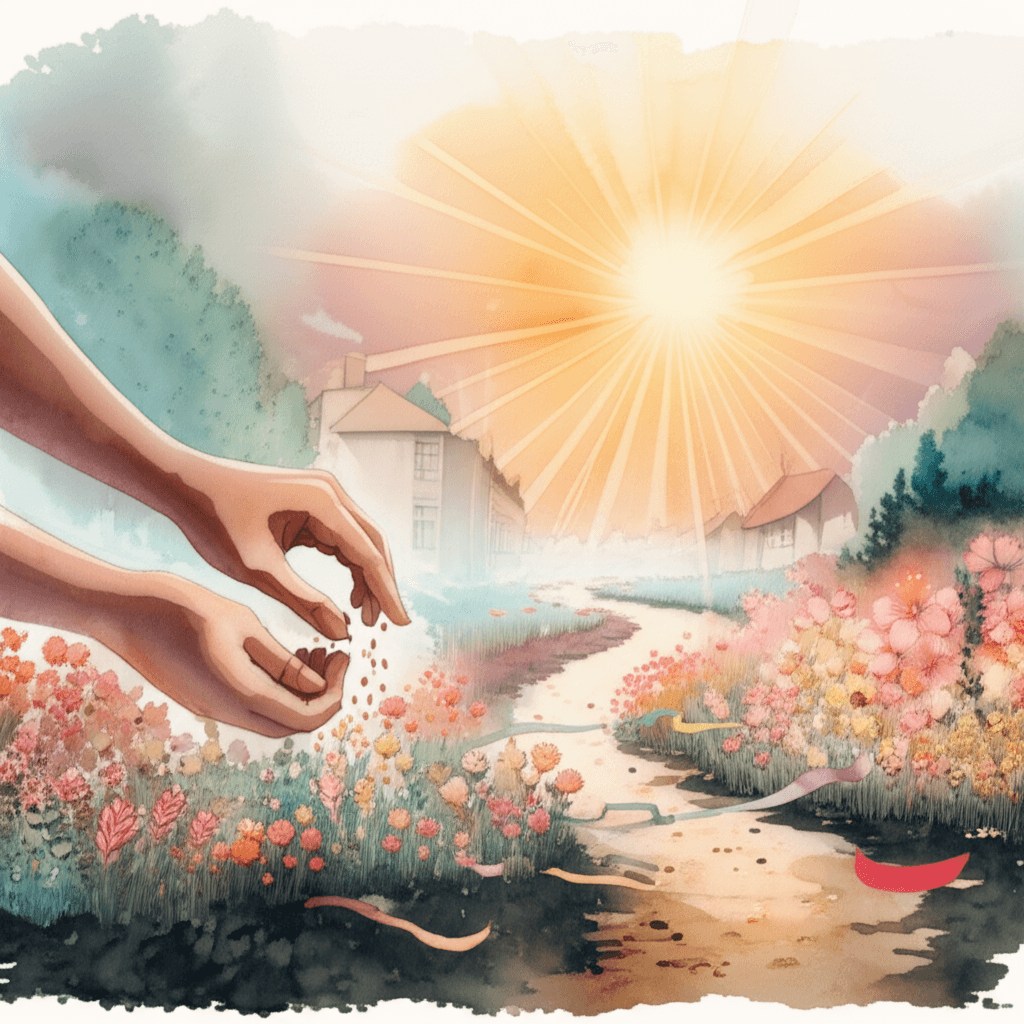How Hidden Generosity Brightens the Days Ahead
Created at: August 23, 2025

Sow generosity in secret and watch how it returns to color your days. — Kahlil Gibran
Planting Kindness, Harvesting Color
At the outset, Gibran’s image of sowing generosity reframes giving as quiet cultivation rather than public performance. Seeds disappear beneath the soil; likewise, secret acts vanish from view, trusting time and conditions to do their work. The promised return is “color,” not coin—a richer palette of mood, meaning, and relationship that tints the ordinary with unexpected light. By shifting the metric from visibility to vitality, the metaphor invites patience and faith. Because color arrives after the sowing, the line also cautions against immediate accounting. In life as in gardens, germination is silent before it is vivid. This, in turn, prepares us to consider how inner rewards and social ripples can emerge precisely when applause is absent.
The Psychology of Giving Without Applause
Research suggests that generosity lifts well-being even when no one is watching. Dunn and Norton (2008, Science) found that spending on others improves happiness, a result echoed by studies on the “helper’s high,” which link prosocial acts to warm, enduring affect. Neuroimaging strengthens the point: charitable giving activates reward circuitry; Moll et al. (PNAS, 2006) and Harbaugh et al. (Science, 2007) report ventral striatum responses during donations. Moreover, secrecy strips away impression management, letting intrinsic motives dominate. Without an audience, people are less prone to strategize for status, and the brain’s quiet glow feels cleaner—less entangled with comparison and more aligned with identity. Thus, hidden giving often returns as steadier color: calm pride, purpose, and reduced rumination.
Ancient Counsel on Anonymous Charity
Across traditions, the counsel is strikingly consistent. The Sermon on the Mount advises, “Do not let your left hand know what your right hand is doing… so that your giving may be in secret” (Matthew 6:3–4). Maimonides’ ladder of tzedakah places anonymous giving near the top, preserving dignity (Mishneh Torah, Gifts to the Poor 10:7–14). The Qur’an praises concealed charity as “better” for the giver’s soul (Q 2:271), while a famous hadith lauds the one who hides their alms so thoroughly that even their “left hand” remains unaware (Sahih al-Bukhari; Sahih Muslim). Gibran’s lyrical injunction echoes this chorus. By decentering the self, hidden generosity keeps the gift pure, the recipient respected, and the giver’s heart unburdened by the restless hunger for recognition.
Quiet Acts, Loud Ripples
Even without a spotlight, generosity can travel. Experiments show that cooperative behavior cascades through networks, inspiring second- and third-order kindness (Fowler and Christakis, PNAS, 2010). Theoretical work on “upstream reciprocity” likewise suggests that receiving help motivates people to help others, not just the original benefactor (Nowak and Roch, 2007). Secrecy modifies the route—not the reach—of these ripples. When the giver is invisible, the recipient’s agency comes forward, and gratitude often flows outward rather than upward. In practice, a quiet tuition payment, a grocery card slipped into a mailbox, or a debt forgiven without fanfare can seed ongoing generosity in places the original giver will never see.
Integrity, Dignity, and Freedom from Performance
Secrecy safeguards the moral center of the act. By removing the stage, it dampens performative incentives—what Goffman (1959) would call impression management—and reduces the subtle coercion that public gifts can impose on recipients. Privacy protects dignity: the helped person is spared an audience and the indebtedness that applause can invite. At the same time, the giver resists the addictive loop of praise and comparison. Free from the currency of likes and plaques, they cultivate a quieter form of character—one that accumulates as habit rather than headline. In this way, secret generosity colors days with self-respect instead of self-display.
The Patience of Invisible Harvests
Like a garden, hidden generosity matures on its own timetable. Returns can be indirect—a softened temper, renewed trust, a chance encounter aided by a reputation you never curated. The harvest often arrives through resilience: when we act as if goodness is abundant, we notice and create more of it. Practically, this means designing for anonymity and consistency. Set aside a modest “secret giving” budget; choose the anonymous option on donation forms; write an encouraging note without a signature; tip generously when you will never see the server again. Keep a private log—not for pride, but for pattern-recognition—so you can watch, over seasons, how the colors deepen.